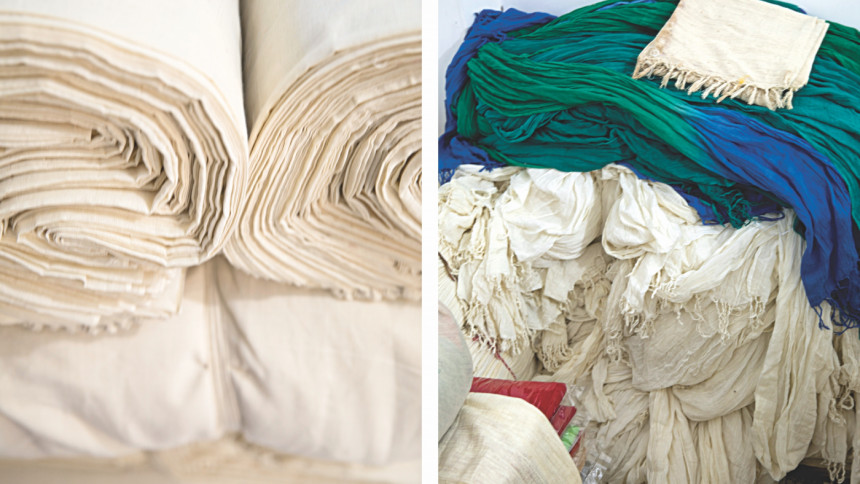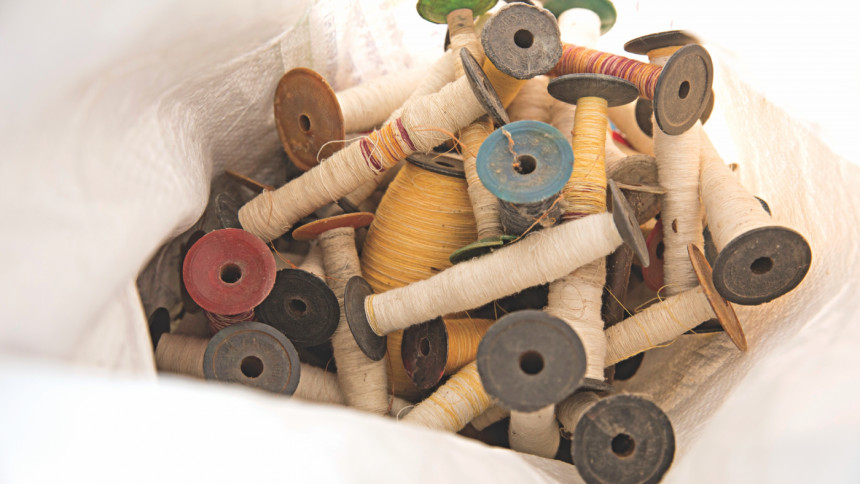All for natural fabrics

You probably have a favourite cotton T-shirt or a dress that you have worn for years. I certainly do. I have cotton T-shirts that are six or seven years old, which went through more than one hundred washes and still hold up really well. The secret is in their fabric, which is a natural fibre that grows on the cotton plant.
Today, marketplaces overflow with synthetic fabrics — nylon, polyester, acrylic, and rayon. Why? Because they are low-cost, wrinkle-free, and generally, more durable than natural fabrics like cotton, silk, wool, or linen. But all synthetic fabrics are just different forms of plastic. To cater to consumers' demand for cheap apparel, fashion houses and fast fashion retailers around the world produce clothes that are low-priced, but have detrimental effects on our health and environment.

NAY TO SYNTHETIC FABRICS
The production of synthetic fabrics results in serious environmental damages — from water and air pollution during the long and toxic production process, to microplastics being released to waterways and sewers with every wash.
A discarded garment eventually ends up in a landfill, where it will take the garment some 300 years to break down, if it is made from a synthetic material like polyester, which is, a by-product of petroleum.
It may sound hard to believe, but unlike natural fibres, which are biodegradable, synthetic fibres take hundreds of years to decompose. During this eerily long decomposition process, it continues to pollute the environment. If such a discarded garment ends up in a water body instead of a landfill, the result remains the same — the garment releases its microfibers and artificial dyes to rivers, lakes and oceans, pollutes the water, and even disrupts the food chain — microfibers easily end up in the guts of fish and other marine animals.
Manmade textiles can also cause allergic reactions to people with sensitive skin. If you have ever developed rashes or skin irritations from a garment, it could very well be because of the material it was made from. On the other hand, cotton, silk, and linen are naturally hypoallergenic!
MAKE A NATURAL CHOICE
Have you ever left home on a hot summer day donning a georgette dress, or a polyester shirt? If yes, then you must have felt like a loaf of bread baking in an oven. But this would not have happened if you had put on a cotton or linen garment. Because synthetic fibres trap body heat and are not soft to the skin, you will also notice that when manmade fabrics are used in undergarments, bed sheets or pajamas, they turn out extremely uncomfortable.
Fibres like cotton, linen, wool, and silk come from cotton plant, flax plant, sheep, and silkworm respectively. Because they come from nature, they are environmentally sustainable, comfortable, breathable, biodegradable, moisture-wicking, durable, and heat-responsive.

Yes, natural textiles are more expensive, but that is because they are not made by you or me. They also have much better quality than synthetic textiles. And this is exactly why a good-quality cotton T-shirt can pull through one-hundred washes! Therefore, even though they cost more, clothes made from natural fibres are always a better investment.
You can argue that natural textiles are sometimes harder to maintain than synthetic textiles. For instance, cotton and wool shrink if you do not follow the right washing instructions; wool is prone to moth attacks; and silk gets damaged when exposed to sunlight. But remember that all of the above happen because their fibres come from 'natural' sources.
No matter what we wear, it will have some impact on the environment. Conventionally-grown cotton uses tonnes of pesticides and synthetic fertilisers and a large amount of water. Organic cotton is therefore the best option, but clothing made from organic cotton are more expensive, and not readily available everywhere.

In spite of the downsides associated with conventional cotton farming, it is still a much better choice than a synthetic, non-biodegradable fabric like polyester, which uses toxic chemicals; and utilises more than twice the energy of conventional cotton, because more than 70 billion barrels of oil are used globally in its production every year.
Fast fashion may be cheap, but it comes at a high cost. Next time you go shopping for clothes, pick out a garment that has been made from a natural fibre. It may cost you a bit more, but it is going to be a better investment and we can assure that you will love the feel of it!
Photo: LS Archive/Sazzad Ibne Sayed


 For all latest news, follow The Daily Star's Google News channel.
For all latest news, follow The Daily Star's Google News channel. 



Comments